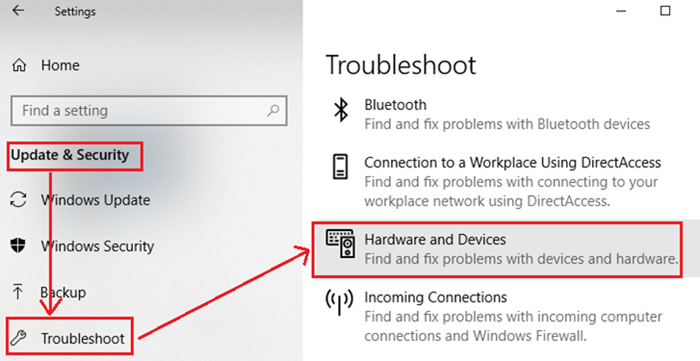Windows 10 version 2004 faced the issue where accessing Parity Storage Spaces was a problem. Microsoft suggested making the storage space as Read-only, so the data doesn’t get affected. Now the Windows Team has released Windows Troubleshooters for Parity Storage Spaces issue. You can use them to automatically change system settings to fix the problem and also makes sure to prevent further data corruption.
Note Simple Storage Spaces and Mirror Storage Spaces are not affected by this issue. Also, the troubleshooter appears only when you have an issue, and OS has attempted to recover. Make sure to check if it was run automatically.

Windows Troubleshooters for Parity Storage Spaces
Microsoft has already warned that reverting to the previous version or running the CHKDSK command and any attempt to fix the problem not recommended by them might result in data corruption. You can follow the manual method or download the troubleshooters from the Windows Team and give it a try. There is currently no full mitigation for all scenarios of this issue.
- Open Windows 10 Settings
- Navigate to Update & Security > Troubleshoot
- Click on the View History link in the Troubleshoot section
- If the troubleshooter has attempted to run, you will see a critical troubleshooter or recommended troubleshooter with the title and description from the below table. The notes column explains what the troubleshooter does.
| Title | Description | Notes |
| Hardware and devices troubleshooter | Automatically change system settings to fix a problem on your device. | This troubleshooter will prevent issues with the data on your Storage Spaces. After the troubleshooter has run, you will not be able to write to your Storage Spaces. |
| Storage space troubleshooter | Data corruption was detected in your parity storage space. This troubleshooter takes action to prevent further corruption. It also restores write access if space was previously marked read-only. For more information and recommended actions, please see the link below. | This troubleshooter will mitigate the issue for some users and will restore read and write access to your Parity Storage Spaces. |
This troubleshooter will mitigate the issue for some users and will restore read and write access to your Parity Storage Spaces.
Note Files that have already had issues may need to be recovered. See the “Recover files” section below for more information.
If you try to run these when having Simple Storage Spaces or Mirror Storage Spaces, It may show Could not be run message for the troubleshooter. It is expected as Simple Storage Spaces, and Mirror Storage Spaces are not affected by this issue.
That said, if the troubleshooter still gives you a problem, the only way out is the manual method. You need to run the below-mentioned command in PowerShell with Admin privileges to make the storage space as read-only.
VirtualDisk | ? ResiliencySettingName -eq Parity | Get-Disk | Set-Disk -IsReadOnly $true
How to Recover files from Parity Storage spaces
If you are able to access your Parity Storage Spaces and it does not show it as RAW in the disk manager, then you can use the WinFR tool to recover lost files. Its an official file recovery tool from Windows Team.
You will have to use the segment mode with the undelete files flag to recover files from the NTFS volumes. The default mode will recover all possible files, but if you are concerned about specific file types, then you can use the /n *.docx to recovery only those files types. Here is the full set of commands and options
winfr source-drive: destination-folder [/switches]
- /r – Segment mode (NTFS only, recovery using file record segments)
- /n <filter> – Filter search (default or segment mode, wildcards allowed, trailing \ for folder)
- /x – Signature mode (recovery using file headers)
- /y:<type(s)> – Recover specific extension groups (signature mode only, comma separated)
- /# – Displays signature mode extension groups and file types
- /? – Help text
- /! – Display advanced features
Recovering files from non-NTFS file systems are only supported in signature mode.
How to Recover Files in case of RAW in Disk Manager
If the ReFS volume shows as RAW in Disk Manager, you can use the ReFSUtil command to recover data to a volume of equivalent size. There are two modes, and we suggest you start with quick and then try full. The tool is included in Windows and Windows Server. It attempts to diagnose heavily damaged ReFS volumes, identify remaining files, and copy those files to another volume.
Perform Quick recovery:
In an elevated command prompt
refsutil salvage -QA <source volume> <working directory> <target directory>
For example
refsutil salvage -QA E: F:\SalvagedFiles
Perform Full Recovery
In an elevated command prompt
refsutil salvage -FA <source volume> <working directory> <target directory>
For example:
refsutil salvage -FA E: F:\SalvagedFiles
It is good to see that Microsoft has been working ion bring new solutions for those who are facing the Parity Storage Spaces Issue after updating to Windows 10. These troubleshooters can help in resolving the problem by a bit, if not all.